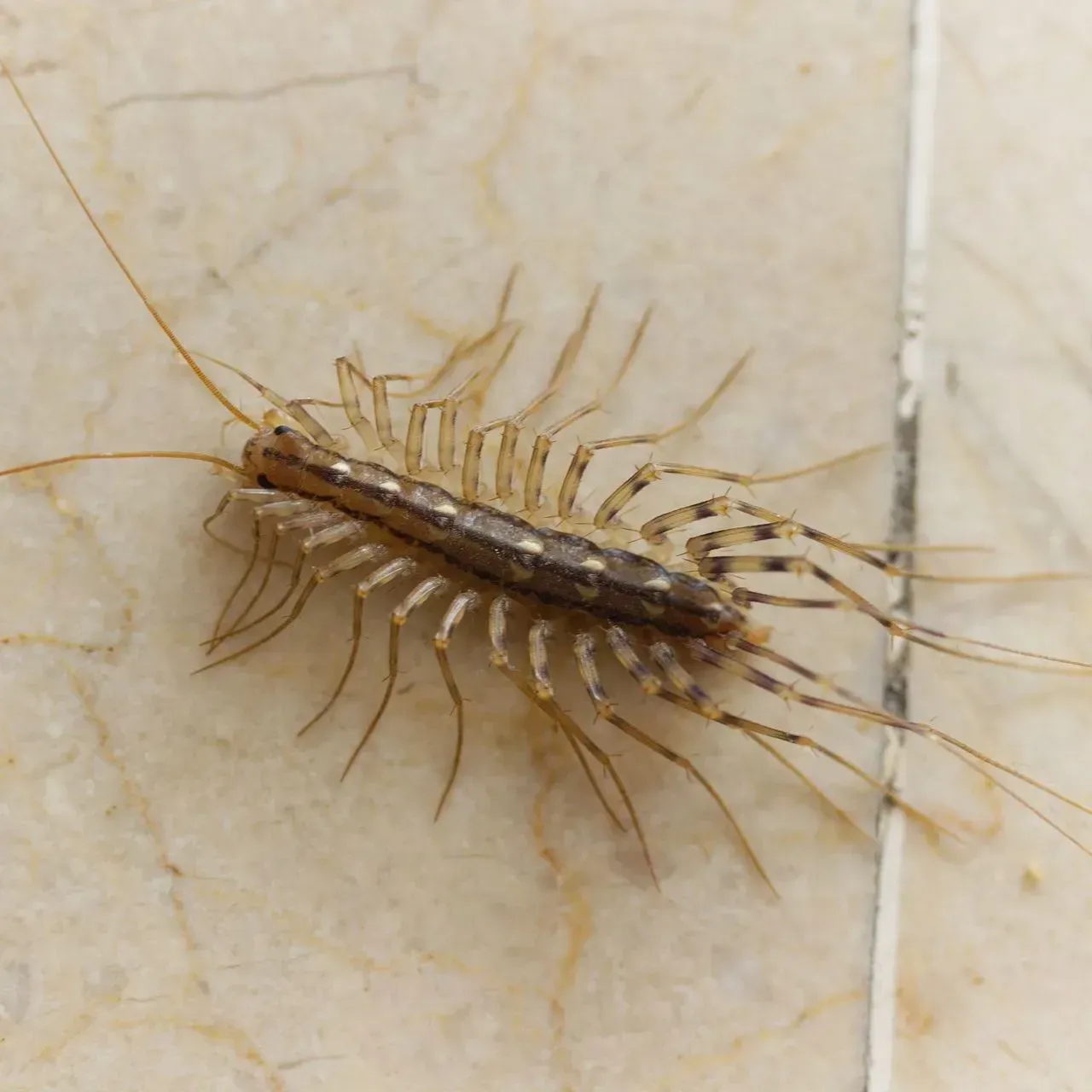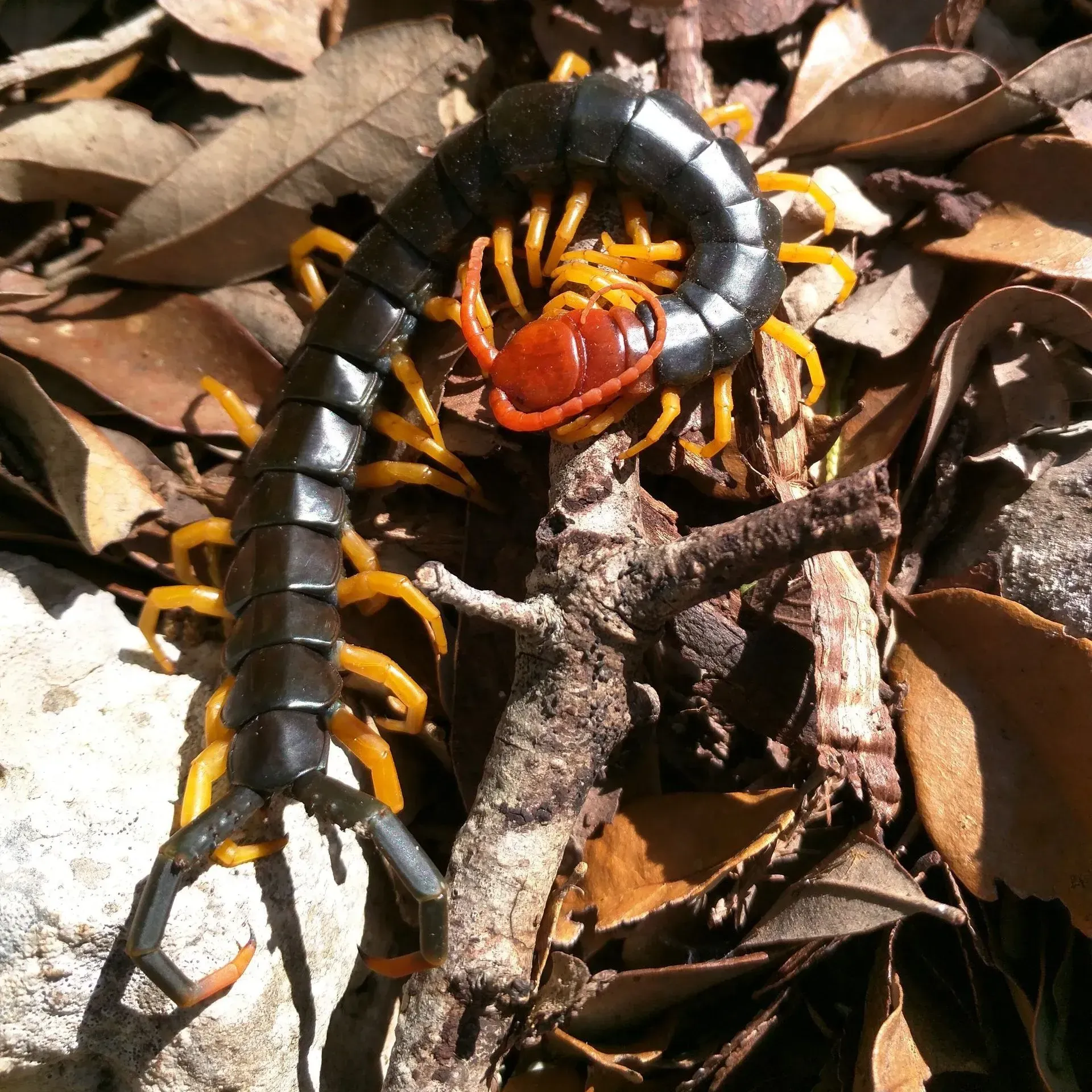Trusted Pest Control Services for Texas Centipedes
Discover reliable pest control solutions tailored for Texas centipedes. Safeguard your home against the menacing presence of house centipedes in Texas with our specialized services. We address the challenge of poisonous centipedes in Texas, offering effective remedies against the threat they pose. Trust our expertise in handling Texas redheaded centipedes and other large centipedes prevalent in the region. Don't let centipedes in Texas disrupt your peace of mind. Count on our dedicated team to deliver targeted solutions, ensuring your home remains centipede-free. Choose us for comprehensive protection against the diverse species of centipedes lurking in Texas.

House Centipede
Discover the Texas house centipede, a common sight in Lone Star State homes. These large centipedes, while not aggressive, can startle with their quick movements. Despite their appearance, they're beneficial predators, preying on other pests. However, some poisonous centipedes in Texas pose risks, requiring vigilant pest control measures. Golden Rule Pest, Termite, & Weed Control LLC offers comprehensive services, including Texas termite and pest control, ensuring your home remains a haven, free from unwelcome intruders.
- Appearance:
- House centipedes have an elongated, flattened body with many segments.
- They typically have 15 pairs of long, slender legs, with each leg ending in a pincer-like structure.
- The body is grayish-yellow with three dark stripes running down the length.
- Habitat:
- House centipedes are commonly found in homes, particularly in damp or moist areas such as basements, bathrooms, and crawl spaces.
- They are also found outdoors in leaf litter, under stones, and in other humid environments.
- Diet:
- House centipedes are carnivorous and feed on a variety of small pests, including insects, spiders, silverfish, and other arthropods.
- They use their specialized front legs to capture and immobilize prey.
- Venom:
- House centipedes are venomous, but their venom is not harmful to humans.
- Their venom is primarily used to subdue and immobilize their prey.

Texas Redheaded Centipedes
Texas redheaded centipedes are among the largest centipedes in Texas, known for their striking red heads and venomous bite. These poisonous centipedes in Texas can pose a threat to both humans and pets. If you encounter these pests, it's crucial to seek professional help. Golden Rule Pest, Termite, & Weed Control LLC specializes in handling Texas redheaded centipedes and offers comprehensive Texas termite and pest control services to keep your home safe and pest-free.
- Appearance:
- The Texas redheaded centipede is large, with an elongated body that can reach lengths of 6 to 8 inches or more.
- It has a distinctive coloration, featuring a reddish-orange head and body with a contrasting black to dark brown trunk.
- Legs:
- Texas redheaded centipedes have around 21 pairs of legs.
- The last pair of legs is longer and functions as sensory appendages.
- Habitat:
- They are often found in a variety of habitats, including woodlands, gardens, and areas with sufficient ground cover.
- They are nocturnal and seek shelter during the day.
- Diet:
- Texas redheaded centipedes are carnivorous predators.
- They feed on a variety of prey, including insects, spiders, small vertebrates, and other centipedes.
- Venom:
- Texas redheaded centipedes are venomous and use their venom to subdue prey.
- While their bite can be painful and cause localized swelling, it is not considered medically significant for most people.
If you come across a Texas redheaded centipede, it's best to observe it from a safe distance and avoid any attempts to handle it. While their venom is not considered dangerous to most people, individual reactions can vary, and bites may cause discomfort. As with any wildlife, it's important to appreciate these creatures from a respectful distance in their natural habitats.